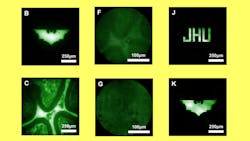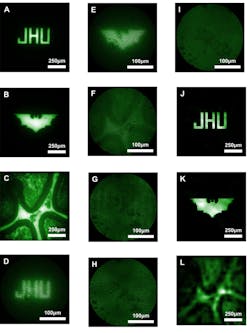New Microendoscope Captures Smaller Pictures with Higher Quality
Engineers at Johns Hopkins University have built a lens-free, miniaturized endoscope that takes high-quality images.
Microendoscopes look at neurons as they fire in the brains of animal test subjects, and therefore must be small yet powerful enough to create clear images. Most standard microendoscopes are about half a millimeter to a few millimeters in diameter and require larger, more-invasive lenses to make high-quality images. Although there are already lensless microendoscopes, they rely on an optical fiber to scan an area of the brain pixel by pixel; as the fiber frequently bends and moves, imaging quality is lost.
At Johns Hopkins, researchers created a lens-free, ultra-miniaturized microendoscope that, compared to a conventional lens-based microendoscope, increases the amount of surface area researchers can see and improves image quality.
The key to the new scope is that researchers used a flat grid that randomly blocks light (which they call a coded aperture). It creates a projection in a known pattern, akin to randomly poking a piece of aluminum foil and letting light through the small holes. This creates a messy image, but one that provides a information about where the light originates. That information can be used to computationally reconstruct into clearer images.
The new microendoscope doesn't need to be moved to focus on objects at different depths. Instead, the device is computationally refocused to determine where the light originated from in three dimensions. This lets the endoscope be much smaller than traditional versions.
The research team will test its microendoscope with fluorescent labeling procedures in which active brain neurons are tagged and illuminated, so as to determine the endoscope’s accuracy in imaging neural activity.

